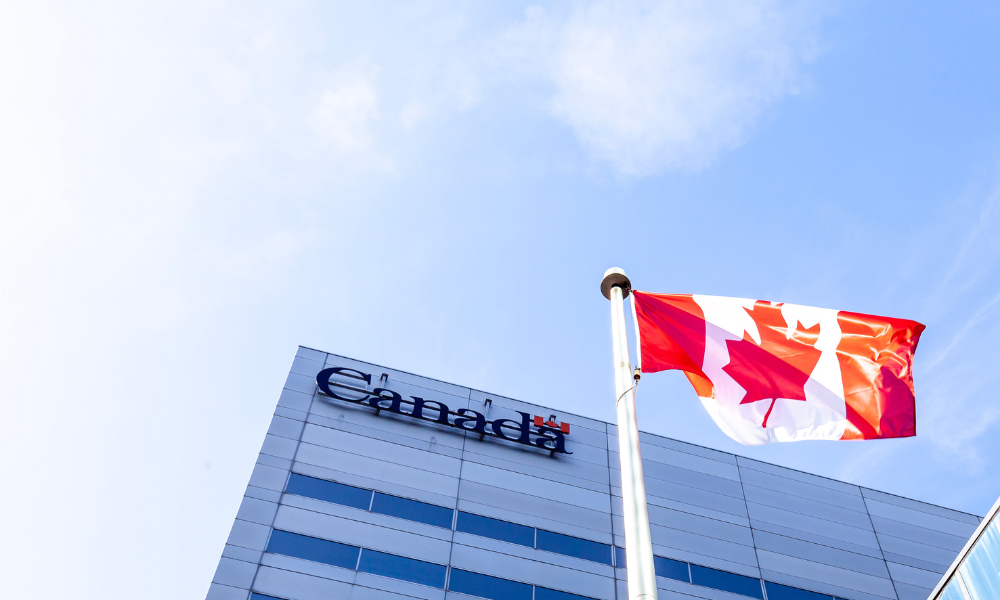Report reveals rising usage, but most people seem to be managing to service the debt, although paying down at a slower rate

Canada’s rising cost of living was driving more credit card usage even before the Bank of Canada increased interest rates.
Total consumer credit card spending in the fourth quarter of 2021 was up 14.4% year-over-year and almost 10% quarter-over-quarter according to a report published today by Equifax Canada.
It reveals the average monthly credit spend per credit card consumer is now $2,205, up more than 15% from a year earlier and almost 7% above the pre-pandemic period of Q4 2019.
While holiday spending always drives credit card spending higher, Rebecca Oakes, Equifax Canada’s AVP of advanced analytics, says the figures show Q4 2021 saw higher than ever average credit card spending per credit card consumer.
“Consumer payment behaviour is slowly getting back to pre-pandemic levels as disposable income from government benefits depletes, but consumers are making less payment for every dollar spent compared to the same time period last year,” she said.
Credit card users are paying down $0.96 for every dollar spent, almost 3% less than they were at the end of 2020. Credit card balances are also rising, with the average in Q4 2021 up 2.4%.
The average credit limit on new cards has increased by 23% year-over-year to $4,966 due to higher demand and lender confidence.
Total debt up but average is down
Equifax Canada says that total consumer debt was up 8% in the last three months of 2021 compared to the same period one year earlier.
While Canadian consumers owed $2.2 trillion, the average person’s debt (excluding mortgages) fell 0.6% year-over-year to $20,686.
However, part of this decrease in average debt was due to a 7.5% decline in new auto finance as supply chain issues has weakened demand for this borrowing.
“The drop in auto and Installment loan debt has been the biggest driver in bringing down average debt this quarter,” said Oakes. “Overall average debt is low, but a small increase in average debt is visible across certain segments.”
Slowing housing market
New mortgage growth slowed in Q4 2021, down 8% year-over-year with the pull-back most significant in some of Canada’s hottest housing markets such as Toronto and Hamilton (16% and 19% respectively).
The average mortgage loan amount was up 10% year-over-year to $335K, but it was down 1.5% quarter-over-quarter, the first time that the average loan amount for new mortgages has shown a quarter-over-quarter drop since the pandemic began.
“There’s no question that sky-rocketing house prices have decreased housing affordability across all segments,” said Oakes. “In addition to high house prices, lenders have also started to move interest rates up in anticipation of rate rises from the Bank of Canada. This could also be limiting the purchasing capacity of many consumers.”
While the quarter-over-quarter easing of average mortgage loan amount could indicate a decline in house prices, demand may mean further price hikes ahead.
Managing the debt
While consumer debt may be high, with credit card borrowing adding risk, consumers appear to be managing so far.
Overall delinquencies remained low with mortgage delinquency at 0.11% and non-mortgage delinquency at 0.86%, both showing a year over year drop of 32% and 21% respectively.
However, the 90+ day delinquency rate for credit cards rose by 3% and non-bank auto delinquencies were up 15% when compared to Q3 2021.
“High inflation is impacting how far a dollar stretches day-to-day for consumers,” added Oakes. “Delinquencies are likely on the upswing for the immediate future when you layer in the pull back of government support and COVID-19 restrictions still hurting businesses.”



